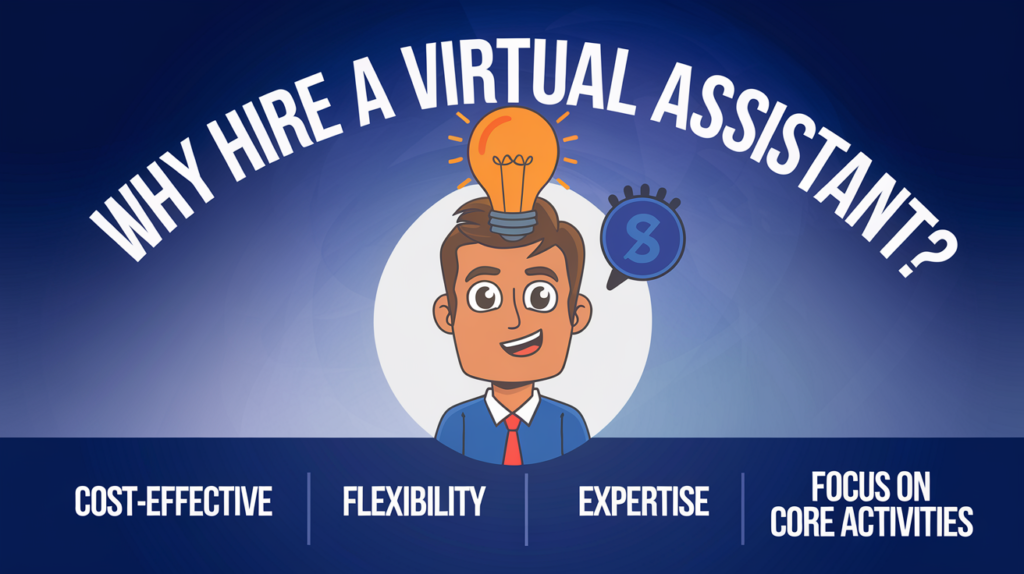In the fast-paced world of modern business, efficiency and productivity are paramount. Enter the virtual assistant (VA)—a professional who provides administrative, technical, or creative assistance remotely. Virtual assistants offer a range of services that can help businesses and individuals streamline their operations and focus on their core activities.
- What Does a Virtual Assistant Do?
Virtual assistants are versatile professionals capable of handling various tasks, including but not limited to:
- Administrative Tasks: Managing emails, scheduling appointments, organizing files, and data entry.
- Customer Support: Handling customer inquiries, managing online chat systems, and resolving issues.
- Social Media Management: Creating and scheduling posts, engaging with followers, and analyzing performance.
- Content Creation: Writing blog posts, creating graphics, and preparing presentations.
- Technical Support: Troubleshooting tech issues, managing website updates, and handling software-related tasks.
- Personal Tasks: Booking travel arrangements, managing personal schedules, and conducting research.

- Why Hire a Virtual Assistant?
- Cost-Effective: Virtual assistants typically work on a freelance basis, reducing the need for a full-time salary and benefits.
- Flexibility: VAs can work across different time zones and offer various hours of availability.
- Expertise: VAs often have specialized skills and can bring a high level of expertise to the tasks they handle.
- Focus on Core Activities: By delegating routine tasks, businesses and individuals can concentrate on strategic goals and growth.

- How to Choose the Right Virtual Assistant
- Define Your Needs: Determine the tasks you need help with and the skills required.
- Check Credentials: Look for VAs with relevant experience and positive client reviews.
- Communication: Ensure that the VA communicates effectively and aligns with your expectations.
- Trial Period: Consider starting with a trial period to assess compatibility and performance.
FAQ’s
1. What is a virtual assistant?
A virtual assistant is a remote professional who provides administrative, technical, or creative support to businesses and individuals. They handle tasks like scheduling, customer support, social media management, and more.
2. What tasks can a virtual assistant handle?
Virtual assistants can handle a wide range of tasks, including administrative support, customer service, social media management, content creation, technical support, and personal errands.
3. How do I find a good virtual assistant?
To find a good VA, define your needs, look for candidates with relevant experience, check references or reviews, and ensure good communication. Platforms like Upwork, Fiverr, and specialized VA agencies can be helpful.
4. How much does hiring a virtual assistant cost?
The cost varies depending on the VA’s experience and the complexity of the tasks. Rates typically range from $15 to $75 per hour or more. Some VAs may offer package deals or monthly retainer options.
5. Can virtual assistants work with multiple clients?
Yes, virtual assistants often work with multiple clients. They usually manage their time to ensure they meet the needs of all their clients effectively.
6. How do virtual assistants handle confidential information?
Professional VAs understand the importance of confidentiality and typically use secure systems and practices to protect sensitive information. It’s advisable to have a confidentiality agreement in place.
7. What tools do virtual assistants use?
VAs use a variety of tools depending on the tasks, including project management software (e.g., Trello, Asana), communication tools (e.g., Slack, Zoom), and document management systems (e.g., Google Workspace, Microsoft Office).
8. What is the difference between a virtual assistant and an executive assistant?
While both roles provide administrative support, an executive assistant often works closely with senior executives and may handle more complex tasks and higher-level responsibilities. Virtual assistants generally offer a broader range of support remotely.
9. How do I effectively communicate with my virtual assistant?
Effective communication involves setting clear expectations, using collaborative tools, providing regular feedback, and having scheduled check-ins. Clear instructions and open communication channels help ensure smooth collaboration.
10. Can a virtual assistant work across different time zones?
Yes, virtual assistants can work across different time zones. It’s important to discuss availability and scheduling to ensure alignment with your needs.
11. What should I include in a contract with a virtual assistant?
A contract should include details such as the scope of work, payment terms, confidentiality agreements, working hours, and termination conditions. This helps set clear expectations and protects both parties.
12. How do I ensure my virtual assistant is productive?
To ensure productivity, set clear goals and deadlines, use project management tools, and have regular check-ins. Providing constructive feedback and recognizing good work can also help maintain motivation.

